Is the Chilkoot Trail Good for Spring Break Backpacking? Top 3 Considerations

Chilkoot Trail 2026: Essential Safety Tips for Your Adventure
Planning a visit to the Chilkoot Trail in 2026 requires careful preparation and a strong emphasis on safety. This iconic historical route, once a vital path for Klondike gold rush stampeders, offers an unforgettable wilderness experience. However, its remoteness and challenging terrain demand respect and preparedness. Thorough research and adherence to safety guidelines are paramount for a successful and enjoyable trek.
Before embarking on your journey, it is crucial to understand the trail's unique environmental conditions. Weather can change rapidly, with snow possible even in summer. Proper layering of waterproof and windproof clothing is essential, as is sturdy, broken-in hiking footwear. Be prepared for a variety of conditions, including rain, mud, and potential snow at higher elevations.
Navigation on the Chilkoot Trail, while generally well-marked, can still be disorienting in poor visibility. Carrying and knowing how to use a map and compass, or a GPS device with backup batteries, is highly recommended. Never rely solely on electronic navigation; always have a physical map and a compass. Informing someone of your itinerary and expected return time is a non-negotiable safety measure.
Wildlife encounters are a reality in this pristine environment. Bears, both black and grizzly, inhabit the area. Carry bear spray and know how to use it. Store food properly in bear-resistant containers or designated storage lockers at campsites, and make noise while hiking to avoid surprising animals. Understanding bear behavior and maintaining a safe distance is key to preventing dangerous encounters.
Water sources are generally available, but all water must be treated before consumption. Carrying a reliable water filter or purification tablets is indispensable. Dehydration can quickly become a serious issue in the backcountry, so carrying sufficient water and knowing how to replenish your supply safely is vital.
Finally, remember that cell service is virtually non-existent on the trail. Emergency communication devices, such as satellite phones or personal locator beacons (PLBs), can be lifesavers in a true emergency. Be realistic about your physical capabilities and fitness level. The Chilkoot Trail is a demanding hike, and proper physical conditioning is crucial for preventing injuries and enjoying the experience safely. Consider taking a wilderness first aid course before your trip.
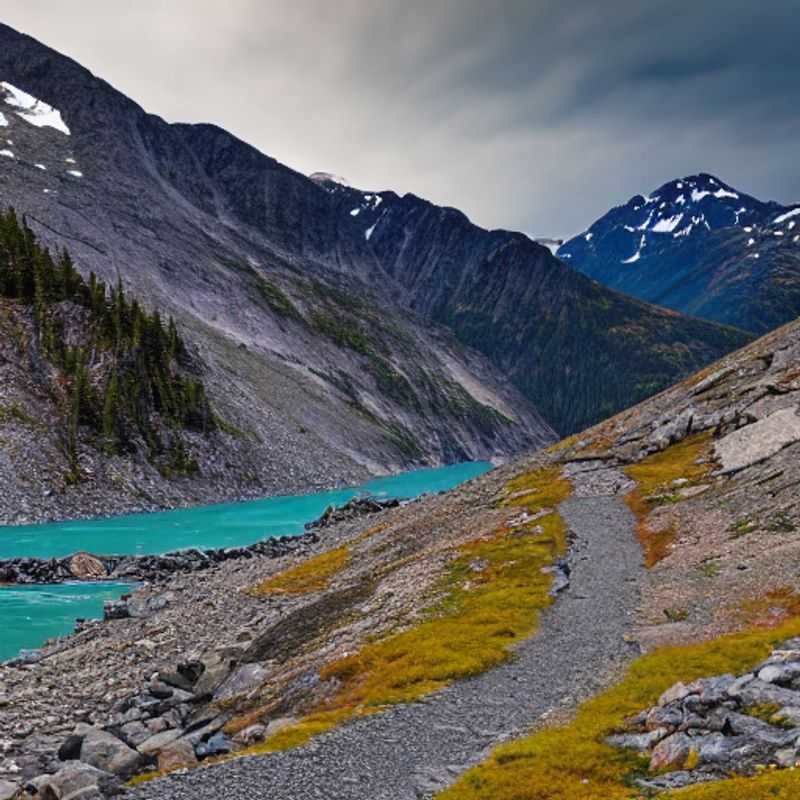
Chilkoot Trail Spring Break: Sun's Out, Mystery's Out! (Is it REALLY Ideal?)
Decoding the Chilkoot: Spring Break Adventure or Frozen Freeze-Out?
Chilkoot Trail's Spring Awakening: A Digital Nomad's Guide to Myth, History & Melting Snow
Spring Break on the Chilkoot: Will the Trail's Legends Unfold Before the Ice Melts?
Chilkoot Trail: Cracking the Code of a Spring Break Adventure (USA & Canada Edition)
Is the Chilkoot Trail Spring Break-Worthy? A Tech-Savvy Explorer's Verdict
Greetings, fellow digital nomads! Ready for an adventure that blends the thrill of the Chilkoot Trail with the comfort of your caravan? This ain't your grandma's camping trip – we're talking remote work, breathtaking scenery, and a healthy dose of history and mystery rolled into one epic journey.
Between summer and fall, the Chilkoot Trail, straddling the USA and Canada, offers a unique blend of weather. Think crisp mornings, sunny afternoons perfect for working remotely, and cozy evenings around a campfire. It's the Gold Rush legacy that gives this trail its unique character. Imagine: you, your partner, your trusty caravan, and the echoes of history whispering in the wind. The warm weather, perfect for spring break, makes it an ideal time to visit before winter sets in.
Weather: Expect comfortable temperatures, ranging from 10°C to 20°C (50°F to 68°F) during the day. Pack layers, as evenings can get cooler. Rain is a possibility, so waterproof gear is a must.
Food and Culture: Since we're talking about the Chilkoot Trail, finding fancy restaurants is out of the question. This is all about embracing the simple pleasures. Pack your own provisions – fresh produce will likely be limited. You could also stop by local markets in nearby towns for supplies. Budget around $50-$75 per day for food. Think hearty soups, trail mix, and maybe even a celebratory steak at a local diner in Skagway or Dyea for a special occasion.
Local Traditions: The Chilkoot Trail is steeped in Gold Rush history. Many communities celebrate this heritage with museums and historical reenactments. Check local event listings for details. You might stumble upon a local gathering, but don't expect big, boisterous festivals. The area's charm is in its quiet serenity and rich history.
Local People: You'll meet a mix of people: fellow adventurers, local residents, and park rangers. Most are friendly and welcoming, eager to share stories and advice. It's all about sharing the experience and respecting the environment.
Transportation: Your caravan is your primary mode of transportation! Fuel costs will vary, but budget around $100 - $200 per week, depending on your vehicle's efficiency and how far you're driving. Ferry crossings between communities will also be needed. Factor in around $50 - $100 per crossing.
Activities: Hiking is obviously a big draw! Entrance fees to national parks are around $20 - $30 per vehicle per entry. This could potentially add up to $100 or more depending on the number of parks you visit. Remember to respect the fragile ecosystem; leave no trace. The cost of any guided tours will vary.
Accommodation: Your caravan is your home! This is where you'll save big bucks on accommodation costs.
Estimated Total Cost: This is an estimated range, and your final cost will vary. Based on the above cost estimates for a 10-day trip (excluding gear and pre-trip costs), plan for around $1500 - $2500 for a couple. This is a conservative estimate and could increase significantly based on location selection and choice of activities.
Music and Sounds: The sounds of nature will be your soundtrack—birdsong, the wind through the trees, the gentle rush of a nearby stream. At night, the stars become a spectacular light show.
Plants and Animals: Keep an eye out for wildlife – bears are definitely present, so bear safety is paramount! You'll see various types of trees and shrubs typical of the region. The local flora and fauna are part of the region's natural beauty. Research the local wildlife before the trip.
Architecture: The architecture is rustic and historical, mostly influenced by the Gold Rush era, with simple buildings made of wood. Don't expect skyscrapers; the charm lies in the simplicity and the closeness to nature.
Important Note: Always check for current trail conditions and any necessary permits before embarking on your journey. Be prepared for potential challenges – this is a true adventure! Have fun!
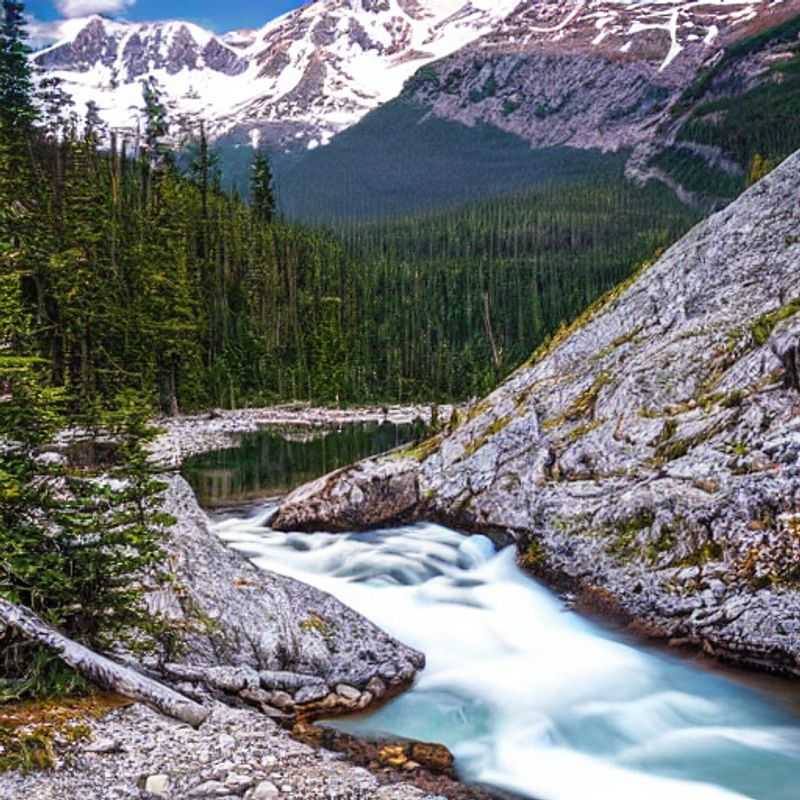
You may also like
Chilkoot Trail Spring Break: Myth, Mystery, & Mud (Is it Worth the Trek?)
Decoding the Chilkoot: A Digital Nomad's Guide to Spring Trekking (USA & Canada)
Chilkoot Trail: Spring Break Adventure or Historical Headache? (A Tech-Savvy Traveler's Take)
Beyond the Trail: Unveiling Chilkoot's Legends & History This Spring Break
Spring Break on the Chilkoot: Will Your Tech Survive the Trek? (A Nomad's Honest Review)
Chilkoot Trail: A Spring Break Blend of History, Hiking, & High-Tech Exploration
Is the Chilkoot Trail Right for Your Spring Break? (A Data-Driven Adventure Guide)
Greetings, fellow digital nomad adventurers! Ready to ditch the cubicle and embrace the Chilkoot Trail, a legendary route spanning the USA and Canada? This summer/fall, my fellow tech-savvy explorer and I are tackling this epic journey in our trusty caravan, and I'm sharing our itinerary – perfect for group travelers who appreciate a blend of history, mystery, and breathtaking landscapes. Think Indiana Jones meets Nomadland, with a dash of Star Trek tech thrown in for good measure (because who needs a map when you have GPS, right?).
Our adventure kicks off in Dyea, Alaska, the trailhead's southern terminus. Expect cool, crisp mountain air, and be prepared for unpredictable weather—pack layers! The architecture here is rustic, reflecting the area's gold rush history. Local people are friendly and welcoming, often sharing stories of their ancestors' struggles and triumphs. Typical sounds? The whisper of the wind through the pines, the occasional call of a raven, and the cheerful chatter of fellow travelers sharing tales around campfires. Local cuisine features hearty dishes – think salmon, wild berries, and hearty stews – to fuel your explorations. Expect to spend around $50-$75 per day on food, depending on your choices.
The trail itself is challenging but rewarding! We'll be documenting our progress via drone footage and live streams (naturally!). Along the way, we'll encounter remnants of the Klondike Gold Rush – expect to pay around $20 per person for guided tours of historical sites. This includes visits to abandoned cabins, remnants of the arduous trails used by prospectors, and museums showcasing the era's artifacts. The sights and stories will immerse you in the thrill and hardship of the gold rush era. Wildlife abounds – keep an eye out for bears, moose, and various bird species (but maintain a safe distance!).
Next, we cross into Canada and the beauty continues! The landscape shifts dramatically, and the cultural atmosphere changes slightly. In Canada, you'll encounter a blend of First Nations culture and influences from European settlers. You might see traditional First Nations art, and experience some cultural events or demonstrations. Expect to find a mix of camping and cabin stays throughout this leg of the journey. We've budgeted $100 per night for accommodation, which could be less if you opt for more camping.
The final destination is Bennett, British Columbia. Here, you'll find the remnants of a bustling port city from the gold rush days. This is an excellent location for experiencing local traditions and dining on delicious Canadian cuisine, such as moose stew or wild game. Allow $60-$80 per day for food. We'll also visit the local museum to understand the history and culture of the region in greater depth. Expect to pay approximately $15 per person for museum entry.
Throughout our journey, we'll be mindful of Leave No Trace principles, respecting the environment and the rich history of this area. Music will be a crucial part of our journey — from classic rock anthems to folk tunes that echo the spirit of the trail. The atmosphere will depend on how many fellow travelers we encounter – sometimes solitary, sometimes convivial. We'll embrace the unexpected, as the Chilkoot trail has a unique way of creating a sense of shared adventure.
Total Estimated Trip Cost (per couple):
Food: $1100 - $1600 (depending on your choices)
Accommodation: $1000 - $2000 (depending on your chosen accommodations)
Activities & Entrance Fees: $350 (approximately)
Transportation (fuel, caravan maintenance): $500 (approximately)
Total: $2950 - $4100 (approximately)
This is just an estimate, and the actual cost could vary based on your choices and unforeseen circumstances. Remember to factor in travel insurance! So, are you ready to join us on this incredible adventure? Let’s uncover the mysteries and legends of the Chilkoot Trail together!
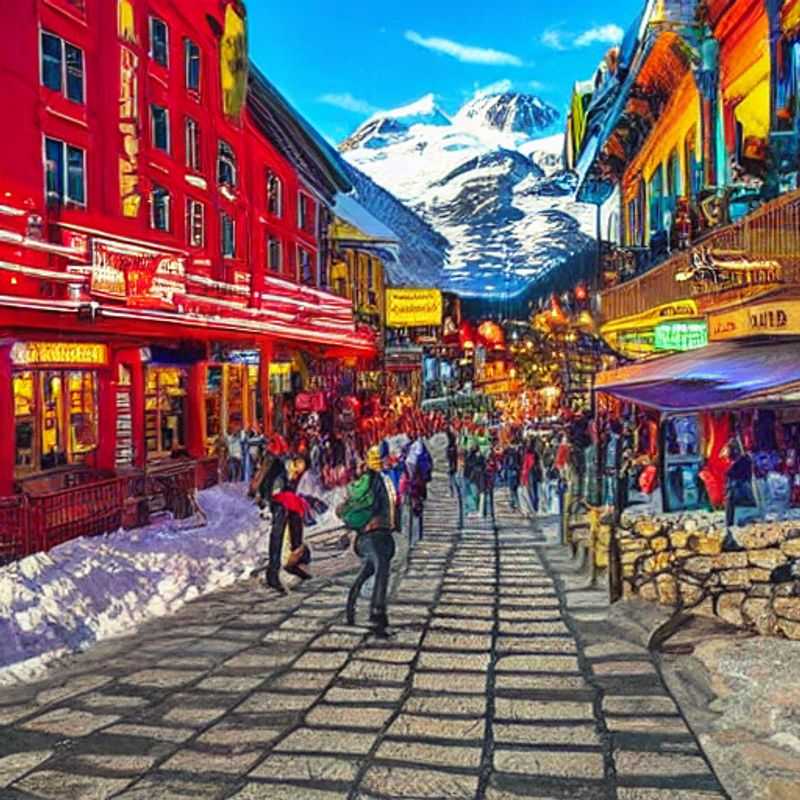
You may also like
Chilkoot Trail Spring Break: Ditch the Beach, Embrace the Glacial Mystery!
Neon Nights vs. Northern Lights: Is the Chilkoot Trail *Really* Your Spring Break Vibe?
Spring Break on the Chilkoot: Trade Cancun for Klondike Gold Rush Ghosts (and Maybe Some Actual Gold?)
Chilkoot Trail: Spring Break Adventure or Arctic Apocalypse? A Tech-Nomad's Verdict
Beyond the Bars: Uncovering Chilkoot's Hidden History (and Still Making Time for Spring Break Fun!)
From Rave to Ravine: A Digital Nomad's Guide to an Unconventional Spring Break on the Chilkoot Trail
Hey fellow digital nomad adventurers! Ready for a Chilkoot Trail road trip that's less "roughing it" and more "refined roughing it"? Think stunning scenery, vibrant (albeit sometimes understated) nightlife, and enough historical intrigue to keep your inner Indiana Jones buzzing. This itinerary's tailored for group travelers – because let's face it, sharing the adventure and the costs makes it even better!
Our journey spans the border between the USA and Canada, hitting the Chilkoot Trail during that magical shoulder season between summer and fall. Expect crisp air, breathtaking views of mountains reflecting in turquoise lakes, and weather that's delightfully unpredictable – pack layers!
Weather Note: Expect temperatures ranging from chilly evenings (think 40-50°F) to pleasantly warm days (60-70°F). Pack for all conditions!
Nightlife & Lively Atmosphere: While the Chilkoot Trail isn't exactly Ibiza, the small towns along the route offer a unique kind of lively atmosphere. Think cozy pubs with local bands playing folk music, maybe a bonfire under the stars, and certainly engaging conversations with fellow travelers. Don't expect booming clubs, but expect genuine connection and camaraderie.
Food & Drink: Embrace the local flavors! Think hearty stews, fresh seafood (depending on location), and plenty of campfire-cooked meals. Budget around $50-$75 per day for food, depending on your culinary preferences. Local breweries are popping up, so be sure to sample some craft beers.
Cultural Habits & Traditions: The Chilkoot Trail area boasts a rich history of indigenous cultures, particularly the Tlingit Nation. Respect their heritage and traditions; if you're interested in learning more, consider visiting local museums or cultural centers. Many towns host events during this season; check local listings!
Transportation Costs: Assuming you're traveling in your caravan trailer, fuel costs will be your biggest expense. Factor in $200-$300 for gas throughout your trip, depending on mileage and gas prices. Remember to account for border crossing fees as well.
Activities: Hiking is the obvious star of the show! Entrance fees for various trail sections vary – budget around $50-$100 for park passes and fees. Many areas offer guided tours; these can range from $100 - $300 per person per day.
Accommodation: With your caravan, your accommodation is sorted! However, consider the occasional campground fee (around $25-$40 per night).
Total Estimated Trip Cost (for a couple): Based on a 7-day trip, factoring in food, fuel, activities, and campground fees, you should budget $1500 - $2500. This is just an estimate and can vary greatly depending on your spending habits and chosen activities.
Important Note: Always check for any travel advisories or restrictions before setting off. Respect the environment and leave no trace behind. And most importantly, have an epic adventure!

You may also like
Chilkoot Trail Spring Break Romance: A Digital Nomad's Guide to Hacking Happiness (or, Why Frozen Landscapes Might Actually Be *Hot*)
Is the Chilkoot Trail's Icy Embrace Right for Your Spring Break Romance? A Data-Driven Analysis
Myth, Mystery, and Maybe a Makeout Session: Uncovering the Chilkoot Trail's Romantic Potential This Spring
Chilkoot Trail: Decoding the Algorithm of Romance on a Legendary Spring Break Adventure
Beyond the Frozen Frontier: Finding Love (and Wi-Fi) on the Chilkoot Trail This Spring
Love, Legends, and Low Bandwidth: A Chilkoot Trail Spring Break Survival Guide for Couples
Hey fellow digital nomad adventurers! Ready for a romantic getaway with a dash of history and a whole lot of breathtaking scenery? Grab your partner and your trusty caravan trailer, because we're hitting the Chilkoot Trail, straddling the border between USA and Canada, during that magical shoulder season between summer and fall. Think crisp air, vibrant colours, and fewer crowds than peak season. This isn't your average romantic escape; we're weaving a narrative of exploration, blending the thrill of the trail with cozy evenings under the stars.
The Chilkoot Trail itself is an epic historical landmark. Imagine yourselves retracing the steps of the Klondike Gold Rush stampeders, but instead of pickaxes, you have laptops! The trail offers stunning views of mountains, glaciers, and lush forests. The weather during the shoulder season is generally mild, perfect for hiking and exploring, but pack layers—it can be unpredictable. Expect temperatures ranging from 50°F to 60°F (10°C to 15°C) during the day, dropping significantly at night.
Romantic opportunities abound! Picture yourselves sharing a picnic lunch by a glacier-fed stream, the only sounds the wind whispering through the pines and the gentle rush of water. Or snuggling up by a campfire under the aurora borealis (if you're lucky enough to be there during a display!). The region's rich history is ripe for exploration – learn about the gold rush era at the various interpretive centers along the trail.
Food-wise, expect hearty fare. Think hearty stews, salmon (wild Alaskan salmon is a must-try!), and locally sourced vegetables. You'll find restaurants in the nearby towns of Skagway, Alaska, and Dyea, Alaska (USA side), and Whitehorse (Canada side) offering a diverse selection of cuisines, though prices might be higher than in larger cities. A mid-range dinner for two can range from $50 to $100. Don't forget to sample local craft beers and wines! Local grocery stores along the way are limited, so ensure your caravan is well-stocked.
Transportation costs will depend on your starting point, but anticipate expenses for gas, ferry fares (if crossing between the US and Canada by boat), and possibly shuttle services if you choose to leave your caravan at a specific point and hike a section of the trail. Budget around $500-$1000 for transportation depending on your travel style and distance.
In terms of cultural experiences, you’ll encounter a blend of cultures – from the indigenous peoples who have lived on this land for centuries, to the descendants of Gold Rush stampeders, and modern-day residents and tourists. The locals are generally friendly and welcoming. The atmosphere is quite relaxed and peaceful, particularly during the shoulder season, which translates into great opportunities for capturing stunning photos of landscapes. Music and sounds are mostly natural – the sounds of nature will be your soundtrack, with only the occasional friendly chatter from other travellers.
Popular plants include various coniferous trees and wildflowers. You might also spot local wildlife, such as deer and bears (maintain a safe distance, of course!), but pet presence is fairly limited in this more rugged landscape. The architecture in the nearby towns is a mix of historical buildings reflecting the Gold Rush era and more modern structures.
Total estimated cost for a 7-day trip for two people (excluding caravan rental and personal items): $1500 - $2500. This is a flexible estimate, and your actual costs will depend on your preferences and spending habits. Remember to factor in permit costs for the trail if needed and your fuel consumption. Enjoy your romantic adventure, and happy travels!
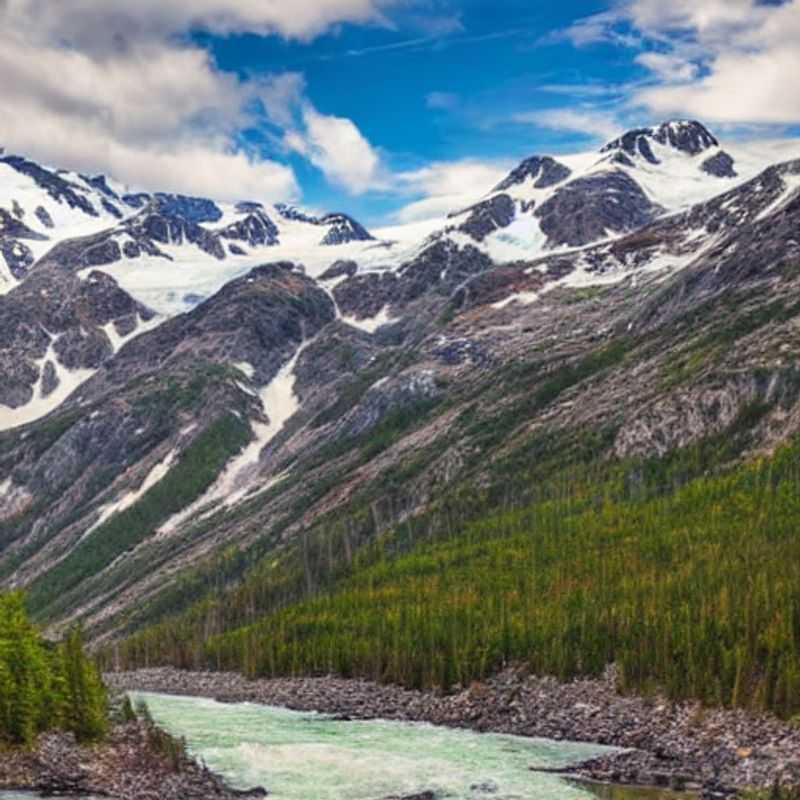
You may also like
Chilkoot Trail Spring Break: Mythical Mountains & Muddy Boots – Is it Worth the Trek?
Chilkoot Trail: Spring Break Adventure – Decoding the Digital Nomad's Guide to Hiking Heaven (or Hell?)
Unpacking the Chilkoot: A Spring Break Mystery – Historical Truths & Trail Tales (Spoiler Alert: It Involves Gold!)
Beyond the Gold Rush: Spring Break on the Chilkoot Trail – A Tech-Savvy Trekker's Guide to Nature's Algorithmic Wonders
Chilkoot Trail: Spring Break Survival Guide – From GPS Glitches to Grizzly Encounters (and Everything in Between)
Is the Chilkoot Trail Right for YOUR Spring Break? A Data-Driven Approach to Outdoor Adventure
Hey fellow digital nomad adventurers! Ready for a Chilkoot Trail expedition that'll blend breathtaking scenery with remote work bliss? Picture this: you and your partner, cruising in your caravan, exploring the majestic Chilkoot Trail spanning the USA and Canada between summer and fall. This isn't your grandma's camping trip; we're talking epic outdoor adventures, woven with history, legend, and a dash of good old-fashioned mystery-solving.
Weather-wise, expect crisp mountain air, sunny days transitioning into cool evenings as summer gives way to fall. Pack layers! The Chilkoot Trail boasts a diverse landscape: lush forests, sparkling rivers, and towering mountains. Think vibrant greens evolving into fiery autumnal hues.
Activities are plentiful! Hiking, of course, is king – from leisurely strolls to challenging climbs. Rent kayaks ($30-$50/day) to explore pristine lakes and rivers. Mountain biking trails ($20-$40/day rental) offer adrenaline rushes. Fishing (licenses ~$20-$50 depending on duration and type) is another rewarding pastime, and you might even spot some wildlife – keep an eye out for black bears and moose! Remember to always practice safe wildlife viewing and follow Leave No Trace principles.
Food is a fusion of North American and indigenous influences. Expect hearty stews, fresh salmon (prices vary wildly depending on season and source; expect at least $20-$30 per meal), wild berries, and delicious local brews. Check out local farmer's markets for authentic tastes and fresh produce. Dining costs will vary depending on your choice of restaurant or self-catering, but budget around $50-$100 per day for a couple.
Culture is rich. You'll encounter both indigenous communities and settlers, each with unique stories and traditions. Learn about the region's history – the Chilkoot Trail was a crucial part of the Klondike Gold Rush! Respect local customs and be mindful of the impact your travels have on the environment. The overall atmosphere is one of adventurous camaraderie, both among seasoned hikers and those new to the trail. Expect to hear stories exchanged around campfires, with laughter echoing through the valleys. Music will range from quiet campfire tunes to the sounds of nature itself.
Transportation costs will vary drastically depending on your starting point. Gas for your caravan, potential ferry fees, and parking fees should all be factored into your budget. Expect around $500-$1000 for gas and potential ferry crossings for a two week journey.
Costs Summary (two-week trip for a couple):
Activities: $700-$1400 (kayaking, biking, fishing)
Food: $700-$1400
Transportation: $500-$1000
Total estimated cost:$1900-$3800 (excluding caravan maintenance and initial travel to the trailhead)
Important Note: Prices are estimates and can fluctuate. Be sure to check current rates and book activities in advance, especially during peak season.
So, pack your laptops, your hiking boots, and your sense of adventure! The Chilkoot Trail awaits. Let's uncover some history, conquer some trails, and create memories that will last a lifetime. Happy trails!
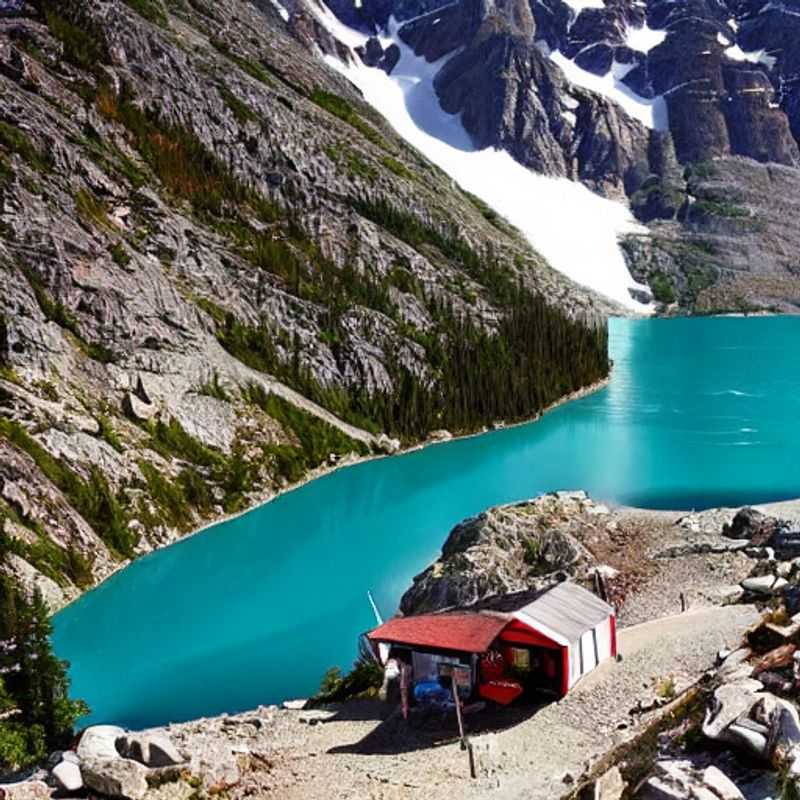
You may also like
Chilkoot Trail Spring Break: Budget-Friendly Adventure or Frozen Budget-Buster?
Decoding the Chilkoot: Affordable Eats & Sleeps for Your Spring Break Trek (USA & Canada)
Chilkoot Trail on a Shoestring: Spring Break Budget Hacks for History Buffs & Adventurers
Mystery & Munchies: Affordable Chilkoot Trail Spring Break – Fact, Fiction & Filling Food
Spring Break on a Dime: Conquering the Chilkoot Trail Without Emptying Your Wallet
Is the Chilkoot Trail Right for Your Spring Break Budget? A Tech-Savvy Nomad's Guide
Chilkoot Trail Spring Break: Myth, Mystery & Meal Deals – A Digital Nomad's Budget Adventure
Hey fellow digital nomad adventurers! Ready for a Chilkoot Trail adventure that blends breathtaking scenery with budget-friendly travel? This itinerary focuses on affordable options for the group traveler, perfect for couples working remotely from their caravan trailer during the shoulder seasons (summer/fall). Prepare for a journey through history, stunning landscapes, and delicious local fare!
Weather: Expect crisp, cool air, with potential for rain showers. Pack layers! Summers are mild, while fall brings a vibrant display of autumn colours but also colder nights.
Accommodation: Forget fancy hotels! Embrace the freedom of your caravan. Campgrounds along the Chilkoot Trail offer affordable nightly rates, often around $15-$30 USD/CAD per night, depending on location and amenities. Many offer stunning views and access to basic facilities. Consider reserving campsites in advance, especially during peak season.
Dining: Ditch the expensive restaurants! Embrace the spirit of resourcefulness. Stocking up on groceries in larger towns before hitting the trail is crucial for saving money. Expect to spend around $30-$50 USD/CAD per day on groceries for two people, depending on your dietary preferences. Picnics with breathtaking views are a must!
Local Food & Culture: The Chilkoot Trail region offers a unique blend of cultures. You'll find influences from both Canadian and Alaskan traditions. Expect hearty, filling meals. Salmon is a staple; try some delicious smoked salmon or fresh catches from local markets. Local berries (blueberries, raspberries) are plentiful in season and make for fantastic desserts or snacks. Don't forget to try the local craft beers, if you indulge. There is a strong focus on sustainability and respecting the natural environment.
Transportation: Your caravan trailer is your primary mode of transport! Gas costs will vary depending on your route and the distance traveled. Budget approximately $100-$200 USD/CAD per week for gas. Plan your routes efficiently to minimize fuel consumption. Public transportation is limited in this area, and is not a suitable option for travelling with your caravan.
Activities: Hiking is the main attraction! The trail itself is a historical wonder, filled with remnants of the Klondike Gold Rush. Many smaller trails branch off the main route. Entrance fees for the Chilkoot Trail vary depending on the season and the access points you use. Allow around $20-$40 USD/CAD per person for permits.
Local People & Tourists: You'll encounter a mix of outdoor enthusiasts, history buffs, and other digital nomads. The atmosphere is generally friendly and respectful. People are passionate about preserving the natural beauty and historical significance of the area.
Sounds & Music: The main sounds are nature’s symphony: birdsong, the wind rustling through trees, and the occasional rush of water. You might find some local musicians performing folk music in nearby towns, but the overall environment is naturally quiet and peaceful.
Plants & Animals: Keep an eye out for wildlife! Bears, moose, and various bird species inhabit the region. Observe them from a safe distance. The landscape is dotted with lush greenery, wildflowers, and towering trees. Observe the local flora and fauna responsibly.
City Architecture: While the trail itself is largely wilderness, the towns at either end (Skagway, Alaska, and Dyea, Alaska) have a fascinating mix of historical buildings and modern structures, reflecting their gold rush past and contemporary life.
Estimated Total Cost (for two people, for a 10-day trip): Accommodation: $150-$300, Food: $300-$500, Gas: $100-$200, Activities: $40-$80. Total estimated cost: $590-$1180 USD/CAD (This is an estimate and may vary depending on your choices and spending habits). Remember to check current prices for accuracy.
Enjoy your Chilkoot Trail adventure! Don't forget your tech, your sense of adventure, and a healthy dose of curiosity.
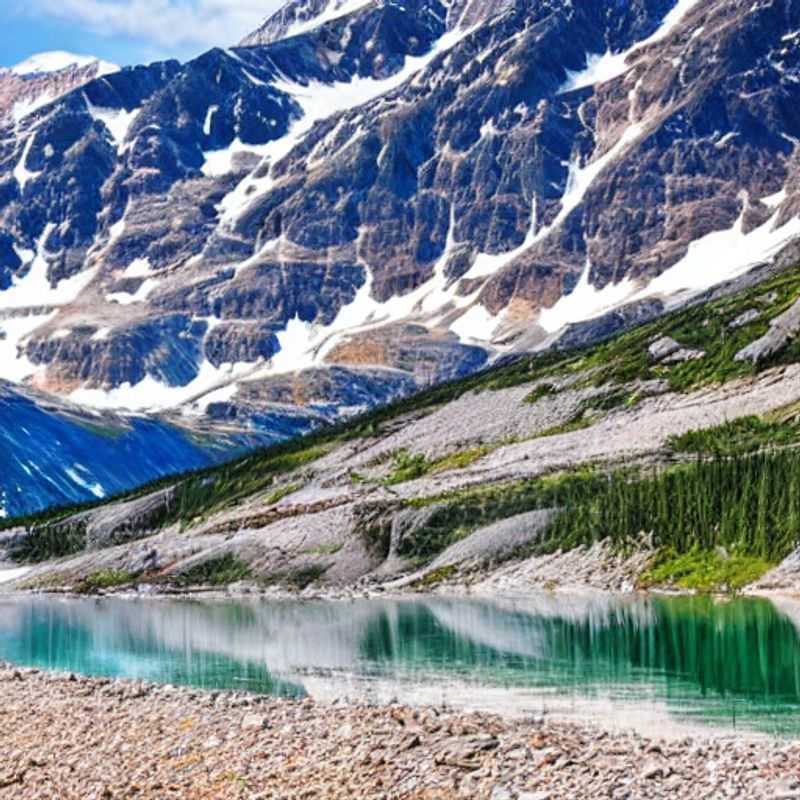
You may also like
Chilkoot Trail Spring Break: Snowshoes or Sunsets? A Digital Nomad's Guide to Convenient Transportation (and Avoiding Yeti Encounters)
Chilkoot Trail: Spring Break Adventure or Frozen Disaster? Decoding the Transportation Puzzle
Conquering the Chilkoot: Spring Break Logistics – Myths, Maps, and Modern Mobility
Is the Chilkoot Trail's Spring Snow a Myth? Navigating Transportation for Your Break
Chilkoot Trail Transportation: Spring Break Edition – A Tech-Savvy Traveler's Guide to Getting There (and Back)
Unveiling the Chilkoot: A Spring Break Expedition – Transportation Tips and Historical Truths
Hey fellow digital nomads! Ready for an epic Chilkoot Trail adventure in your caravan? This ain't your grandma's camping trip – we're blending remote work, historical mystery, and breathtaking scenery. Think summer-to-fall transition, meaning stunning colors and fewer crowds than peak season. Let's talk logistics, because a tech-savvy nomad needs efficient transport!
Getting to the trailhead requires some planning. The most convenient option is driving your caravan. Consider parking in Skagway, Alaska (USA), which offers various RV parks with hookups (expect to pay around $40-$70 per night). From there, you'll likely need a shuttle or taxi to the official trailhead, costing approximately $50-$100 per person, each way, depending on the distance and the availability of services.
Inside the trail itself, transportation is all about your trusty caravan. Remember, this is a challenging trail, so a 4x4 vehicle with proper off-roading capabilities is highly recommended. Be prepared for some bumpy rides! During the summer-fall transition, expect chilly nights and warm days. Pack layers!
Dining on the trail? You'll be primarily self-sufficient, utilizing your caravan's kitchen facilities. Stock up on supplies in Skagway before heading in. Expect to spend approximately $50-$75 per day on groceries for a couple. You can supplement with some occasional restaurant meals in Skagway itself (budget about $50-$100 per meal for two).
The Chilkoot Trail blends American and Canadian cultures. Expect to encounter friendly locals in Skagway, a town with a charming mix of historical architecture and modern amenities. The atmosphere is laid-back, with a focus on outdoor adventure. You'll notice a mix of tourists, from seasoned hikers to families, all sharing a common interest in the area's history. Music is usually folk-inspired or upbeat, reflecting the frontier spirit. While the trail itself is quieter, the overall atmosphere is one of exploration and community.
Typical cuisine involves hearty dishes to fuel hikers: think salmon, hearty stews, and locally baked goods. You'll find many restaurants in Skagway offering such fare. Remember, access to internet and cell service can be patchy, so downloading maps and entertainment beforehand is crucial.
Local traditions often involve storytelling. This area is rich in Gold Rush history and indigenous lore. Be respectful of nature and the local community. Popular plants and animals are the ones associated with the harsh yet beautiful environment. Think hardy evergreens, wildlife such as bears, and other native animals. Don't forget to bring bear spray!
A typical 10-day trip to the Chilkoot Trail, including transportation, groceries, and meals in Skagway, might cost you approximately $2000 - $3000 for a couple. This is a rough estimate, and it can vary significantly based on your choices. Remember to factor in potential unexpected expenses.
Enjoy your adventure! Remember to be prepared and responsible. Happy Trails!
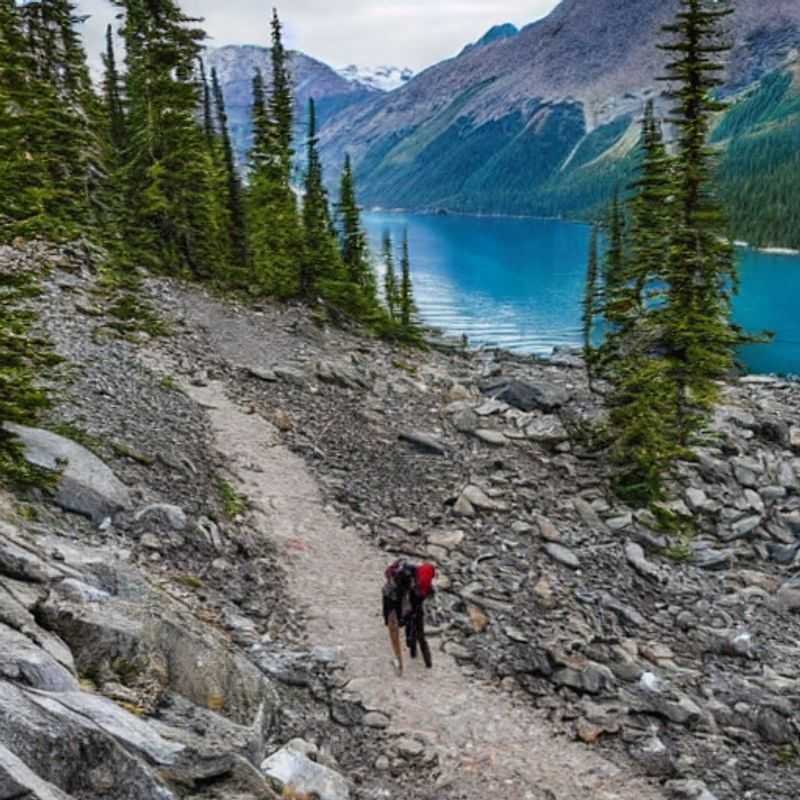
You may also like
Chilkoot Trail Spring Break: Gold Rush or Tourist Rush? (Overcrowding & Pricing Deep Dive)
Chilkoot Trail's Spring Break Dilemma: Mythical Views vs. Real-World Crowds
Decoding the Chilkoot Trail: Spring Break's Hidden Costs (Beyond the Trail Fees)
Is the Chilkoot Trail a Spring Break Winner? A Data-Driven Look at Overcrowding
Spring Break on the Chilkoot Trail: Adventure or Agony? A Nomad's Honest Assessment
Chilkoot Trail: Peak Season Planning – Avoiding the Tourist Trap (A Digital Nomad's Guide)
Chilkoot Trail Spring Break: Balancing Legend, Logistics, and Limiting Lines
Hey fellow digital nomads! Ready for an adventure that blends breathtaking scenery with the thrill of the unknown? Let's explore the Chilkoot Trail, spanning the USA and Canada, during the shoulder season – that sweet spot between summer and fall. Be warned though, this is a popular route, and peak season brings potential for overcrowding and inflated prices. So, plan ahead, my friends!
Imagine this: you and your partner, cozy in your caravan trailer, tackling a historic trail steeped in Gold Rush lore. This isn't your average camping trip; this is a journey into the past. The Chilkoot Trail offers stunning views of mountains, glaciers, and forests. Picture yourselves waking up to the crisp mountain air, the smell of pine filling your lungs. Expect varying weather conditions during the shoulder season: sunny days mixed with potential rain showers. Pack layers!
As for the local scene, you'll find a mix of seasoned hikers and history buffs. The atmosphere is generally positive, everyone sharing stories and tips around campfires. You might hear some folks playing acoustic guitars – perfect campfire tunes! Expect a range of fellow travelers, from solo adventurers to families, all united by the thrill of exploring this iconic trail.
Food-wise, you’ll mostly be self-sufficient in your caravan, but small towns along the trail offer basic supplies. Think hearty soups, stews, and other camping-friendly meals to fuel your explorations. Once you reach a town like Skagway, Alaska, you’ll find more diverse restaurants. Budget about $50-$75 per day for food, depending on your choices. Don't miss out on trying some local Alaskan seafood if you can!
Cultural experiences here are deeply connected to the Gold Rush history. You'll encounter historical sites, museums, and maybe even stumble upon local storytelling events. Entrance fees to museums and historical sites typically range from $10-$20 per person. Remember to respect the land and its history.
Transportation is mainly your trusty caravan. Gas costs will vary based on your route and the distance you travel. Estimate around $200-$300 for fuel during your trip, depending on your journey. Remember, bringing your own accommodation keeps costs down! There will likely be limited public transportation along the trail itself, so this is another reason why the caravan makes sense.
Let’s talk budget. Considering food, fuel, entrance fees, and any spontaneous treats you may encounter along the way, expect a total cost of approximately $2,000-$3,000 for a two-week trip for a couple. This can vary quite a bit depending on your chosen level of luxury and your dining choices.
So, are you ready to hit the trail? Grab your digital nomad gear, pack your caravan, and prepare for an unforgettable adventure on the Chilkoot Trail. Just remember to book in advance, especially if traveling during peak season, to avoid the crowds and high prices. Happy travels!
